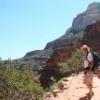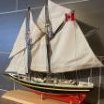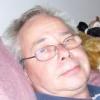-
Posts
213 -
Joined
-
Last visited
Reputation Activity
-

-
 Bender got a reaction from jiljilia in Reale de France by Bender - FINISHED - Corel - Scale 1:75
Bender got a reaction from jiljilia in Reale de France by Bender - FINISHED - Corel - Scale 1:75
Here are some pictures I took outside. The oars are next.
-
 Bender got a reaction from jiljilia in Reale de France by Bender - FINISHED - Corel - Scale 1:75
Bender got a reaction from jiljilia in Reale de France by Bender - FINISHED - Corel - Scale 1:75
A little backtracking. Here are some pictures of yard being cut.
-
 Bender got a reaction from jiljilia in Reale de France by Bender - FINISHED - Corel - Scale 1:75
Bender got a reaction from jiljilia in Reale de France by Bender - FINISHED - Corel - Scale 1:75
More work on the main shrouds.
-
 Bender got a reaction from PaddyO in Tying blocks to yards or masts.
Bender got a reaction from PaddyO in Tying blocks to yards or masts.
I was asked to repost this. This is an easy way of tying blocks to yards or mast. I have also used this to tie blocks to the underside of tops.
I start out with thicker thread. A little trial and error with different threads to get the look I want. Notice I have the thread folded three times and use a clip to hold the thread tight.
I use smaller thread to wrap around the thicker thread. I start out with a slip knot tied in the thinner thread, and stick the loop and loose end of the thicker thread through the knot.
The thinner thread has two ends. The end that pulls the slip knot tight and the end the pulls the loop through the knot.
I pull the loop tight against the thicker thread and use a second clip to hold the thinner thread in place.
I start wrapping the thin thread (The end that pulls the knot tight.) around the three layer of thick thread and the loop of the thin thread.
I make 7 to 10 or more wraps. Trail and error to get the look.
While wrapping and after, you have to hold the wraps to keep them from unwinding. Remove the one clip. Take the end of the thread you've been wrapping and pass it through the loop of the thin thread.
Still while holding the wraps to keep them from unwinding, pull on the other end of the thin thread to pull the loop tight around the end of the thin thread. Pull the thin thread tight but not too tight. If is too tight, it will be hard to pull the thicker thread through. Also, as you pull on the end of the thinner thread it will pull the loop and the other end on the thin thread into the wrap.
You now have a loop and a loose end of thicker thread sticking out each end of the thinner thread. Pulling the loose end on one side pulls the loop in on the other side. Put a block in one loop and pull the loop tight.
Slip the other end over a yard or mast. You can also start out with the loop already around something.
Pull that loop tight.
Add a drop or two of CA glue, and when it is dry snip of the loose ends. This picture shows two block tie to a yard.
-
 Bender got a reaction from justsayrow in Tying blocks to yards or masts.
Bender got a reaction from justsayrow in Tying blocks to yards or masts.
I was asked to repost this. This is an easy way of tying blocks to yards or mast. I have also used this to tie blocks to the underside of tops.
I start out with thicker thread. A little trial and error with different threads to get the look I want. Notice I have the thread folded three times and use a clip to hold the thread tight.
I use smaller thread to wrap around the thicker thread. I start out with a slip knot tied in the thinner thread, and stick the loop and loose end of the thicker thread through the knot.
The thinner thread has two ends. The end that pulls the slip knot tight and the end the pulls the loop through the knot.
I pull the loop tight against the thicker thread and use a second clip to hold the thinner thread in place.
I start wrapping the thin thread (The end that pulls the knot tight.) around the three layer of thick thread and the loop of the thin thread.
I make 7 to 10 or more wraps. Trail and error to get the look.
While wrapping and after, you have to hold the wraps to keep them from unwinding. Remove the one clip. Take the end of the thread you've been wrapping and pass it through the loop of the thin thread.
Still while holding the wraps to keep them from unwinding, pull on the other end of the thin thread to pull the loop tight around the end of the thin thread. Pull the thin thread tight but not too tight. If is too tight, it will be hard to pull the thicker thread through. Also, as you pull on the end of the thinner thread it will pull the loop and the other end on the thin thread into the wrap.
You now have a loop and a loose end of thicker thread sticking out each end of the thinner thread. Pulling the loose end on one side pulls the loop in on the other side. Put a block in one loop and pull the loop tight.
Slip the other end over a yard or mast. You can also start out with the loop already around something.
Pull that loop tight.
Add a drop or two of CA glue, and when it is dry snip of the loose ends. This picture shows two block tie to a yard.
-
 Bender got a reaction from Adrieke in Tying blocks to yards or masts.
Bender got a reaction from Adrieke in Tying blocks to yards or masts.
I am not very good at drawing but . . .
The last four pictures shows different places I have used this method.
Around a yard.
Under a top. These blocks were added by passing the thicker thread around the cross tree before doing any warping.
All of these blocks are attached with this method. I used a variation of this method to attach the stay.
And one more
I lied. One more.
-
 Bender got a reaction from MikeB4 in Tying blocks to yards or masts.
Bender got a reaction from MikeB4 in Tying blocks to yards or masts.
I was asked to repost this. This is an easy way of tying blocks to yards or mast. I have also used this to tie blocks to the underside of tops.
I start out with thicker thread. A little trial and error with different threads to get the look I want. Notice I have the thread folded three times and use a clip to hold the thread tight.
I use smaller thread to wrap around the thicker thread. I start out with a slip knot tied in the thinner thread, and stick the loop and loose end of the thicker thread through the knot.
The thinner thread has two ends. The end that pulls the slip knot tight and the end the pulls the loop through the knot.
I pull the loop tight against the thicker thread and use a second clip to hold the thinner thread in place.
I start wrapping the thin thread (The end that pulls the knot tight.) around the three layer of thick thread and the loop of the thin thread.
I make 7 to 10 or more wraps. Trail and error to get the look.
While wrapping and after, you have to hold the wraps to keep them from unwinding. Remove the one clip. Take the end of the thread you've been wrapping and pass it through the loop of the thin thread.
Still while holding the wraps to keep them from unwinding, pull on the other end of the thin thread to pull the loop tight around the end of the thin thread. Pull the thin thread tight but not too tight. If is too tight, it will be hard to pull the thicker thread through. Also, as you pull on the end of the thinner thread it will pull the loop and the other end on the thin thread into the wrap.
You now have a loop and a loose end of thicker thread sticking out each end of the thinner thread. Pulling the loose end on one side pulls the loop in on the other side. Put a block in one loop and pull the loop tight.
Slip the other end over a yard or mast. You can also start out with the loop already around something.
Pull that loop tight.
Add a drop or two of CA glue, and when it is dry snip of the loose ends. This picture shows two block tie to a yard.
-
 Bender got a reaction from GrandpaPhil in San Felipe by Bender - Mantua/Panart --Scale 1:75--Rebuild Log
Bender got a reaction from GrandpaPhil in San Felipe by Bender - Mantua/Panart --Scale 1:75--Rebuild Log
Don't be tailgating me guns.
-
 Bender got a reaction from cristikc in San Felipe by Bender - Mantua/Panart --Scale 1:75--Rebuild Log
Bender got a reaction from cristikc in San Felipe by Bender - Mantua/Panart --Scale 1:75--Rebuild Log
More cannon pictures.
-
 Bender got a reaction from jay in San Felipe by Bender - Mantua/Panart --Scale 1:75--Rebuild Log
Bender got a reaction from jay in San Felipe by Bender - Mantua/Panart --Scale 1:75--Rebuild Log
Don't be tailgating me guns.
-
 Bender got a reaction from edmay in San Felipe by Bender - Mantua/Panart --Scale 1:75--Rebuild Log
Bender got a reaction from edmay in San Felipe by Bender - Mantua/Panart --Scale 1:75--Rebuild Log
I tapered the frames. The directions said to file the first four and the last three. I took some pictures, but you couldn’t tell they were tapered. The directions were specific on the planking. I’m following them as close as possible. I included two pictures. Notice the little pieces of planking pinned to bulkhead-six. The picture/directions suggested to use this technique to assure proper blank layout.
The San Felipe had porticos (balconies) on two levels the wrapped around the stern. The decks for these porticos had to be added as the planking was attached.
-
 Bender got a reaction from edmay in San Felipe by Bender - Mantua/Panart --Scale 1:75--Rebuild Log
Bender got a reaction from edmay in San Felipe by Bender - Mantua/Panart --Scale 1:75--Rebuild Log
I am really pleased with the way the frame went together. There were no adjustments needed. The frame and stiffeners are designed in such a way that it would be nearly impossible for the bulkheads
not to be square with the false keel. I have nothing but praise for Mantua/Panart for the design of the kit. The directions are a different matter. The instruction/picture book does not have the same directions as the large sheet. For instance: the instruction/picture book has the dummy cannon blocks mounted horizontally along the stiffeners, where as the large sheet has the dummy cannon blocks mounted vertically across the stiffeners. And sometimes the instruction/picture book doesn’t agree with itself. From the instruction/picture book: Step 19 shows frame 1b in place, and later in step 28 it shows the placement of deck 22a, but frame 1b must be mounted on top of deck 22a. All this makes the build that much more interesting. It appears that the kit I bought is a newer version of San Felipe. I emailed Mantua; here’s there reply
referring to 747:
if you have the latest model, you can see from the new color picture instruction, you have to follow
them, considering the large plan an help but not a building indication. Please let us know the
number of the last picture of the manual. On internet we have put the last updated version.
regards MM
So, I looked at Mantuahelp.com, and the online directions are also a mix of the old and newer version of instructions. I’ve read many times here on Model Ship World: Read the directions over and over and make a plan. Even with the wacky directions, I am still very pleased with the kit.
Contents scattered across the floor.
Direction from the large sheets showing the cannon blocks mounted vertically.
Direction from instruction/picture book showing cannon blocks mounted horizontally.
Frame and stiffeners with dummy cannon blocks mounted horizontally.
Dummy cannon blocks are painted black.
Starting the first layer of planking.
-
 Bender got a reaction from Aussie048 in San Felipe by Bender - Mantua/Panart --Scale 1:75--Rebuild Log
Bender got a reaction from Aussie048 in San Felipe by Bender - Mantua/Panart --Scale 1:75--Rebuild Log
More cannon pictures.
-
 Bender got a reaction from Aussie048 in San Felipe by Bender - Mantua/Panart --Scale 1:75--Rebuild Log
Bender got a reaction from Aussie048 in San Felipe by Bender - Mantua/Panart --Scale 1:75--Rebuild Log
More cannon pictures.
-
 Bender got a reaction from Aussie048 in San Felipe by Bender - Mantua/Panart --Scale 1:75--Rebuild Log
Bender got a reaction from Aussie048 in San Felipe by Bender - Mantua/Panart --Scale 1:75--Rebuild Log
The following was originally posted June 30, 2009.
The cannon are done and installed. I haven’t decided if I will add the block-and-tackle to the cannons. I installed the hook-eyes to the cannons and beside each port just in case. Only six cannons will be in clear sight to a casual observer. I might fully rig those six. Also, there are six cannons that I have no idea how to rig. The parts list calls these cannons “falconets-pumps”. They have only two wheels. I looked back in the gallery, but only one San Felipe had any rigging on these six falconets. I have included two pictures of the falconets. They are the last two pictures in this post.
-
 Bender got a reaction from msberkman in San Felipe by Bender - Mantua/Panart --Scale 1:75--Rebuild Log
Bender got a reaction from msberkman in San Felipe by Bender - Mantua/Panart --Scale 1:75--Rebuild Log
Originally posted June 22, 2009.
The kit supplied 48 laser cut plywood steps.
There was nothing to do but sand these pieces. These step pieces were then glued to a piece of dowel, forming a spiral. The curved rails were then glued to the spiral steps. It took a lot of sanding and staining to cover up the ply layers in the plywood steps. Total time for the six stair cases was nearly 50 hours: over 8 hours per step unit.
Step pieces. Steps glued to the dowel, forming a spiral. Winding stair case ready to be installed.
Bunch of deck stuff ready to be glued
The next 3 pictures show the stair cases in place.
-
 Bender got a reaction from riverboat in San Felipe by Bender - Mantua/Panart --Scale 1:75--Rebuild Log
Bender got a reaction from riverboat in San Felipe by Bender - Mantua/Panart --Scale 1:75--Rebuild Log
The following was originally posted June 19, 2009.
When something does not line up, the first words out of my mouth is, “What did I do wrong?” As you can see from the first four photos, the bell and its little house do not fit into its position. The deck above is sitting too far over. It could not be the main deck out of position because notches in the false deck sit in the break-off tabs on the bulkheads. The deck above sits in a notch of the front bulk head.
So, as I thought about it further, I realized that if I glued in a deck out of position then there would be more misalignments. Everything else lines up. The holes in the two decks for the foremast line up. The next question is, did I position everything on the main deck in the correct place? Position of everything on all the decks are dummy proof. The decks are laser engraved. There is a square engraved on the deck where the bell is to be position and a hole for the gratings right behind the bell. So my conclusion: ?????? Could Mantua have made a mistake like this during their revision of this kit? I ended up having to cut out a portion of the upper deck. When the bell is in place you can’t tell the upper deck has been altered. No harm, no foul.
Now 5 years later I am still not sure if I made a mistake or if the kit had a problem. Looking at the finished model now you cannot tell anything is misaligned. If anyone is building this newer version of San Felipe, let me know if you have the same issues or not. I am curious.
In the next two pictures you can see there is not enough room to slide the bell house up against the grating.
This is where I had to cut the upper deck so the bell house
would fit. The hole is actually centered. It looks like I was holding the camera a little off center.
The bell house sitting in place.
-
 Bender got a reaction from riverboat in San Felipe by Bender - Mantua/Panart --Scale 1:75--Rebuild Log
Bender got a reaction from riverboat in San Felipe by Bender - Mantua/Panart --Scale 1:75--Rebuild Log
The following was originally posted May 29, 2009.
I lined the cannon ports this week. The top sides, round ports were lined already. The main deck ports have brass inserts on the outside and frames on the inside. The lower two decks have 58 gun ports that I lined with .5x3 walnut. I painted the strips red before cutting to size. There are 4 more ports below the curve at the stern that I have not cut yet. I also glued on some of brass. Each piece of brass had to have bits clipped off and then filed to shape. There is still a lot of brass left to glue on.
-
 Bender got a reaction from riverboat in San Felipe by Bender - Mantua/Panart --Scale 1:75--Rebuild Log
Bender got a reaction from riverboat in San Felipe by Bender - Mantua/Panart --Scale 1:75--Rebuild Log
Here are the pictures of the braces under the beakhead deck.
-
 Bender got a reaction from riverboat in San Felipe by Bender - Mantua/Panart --Scale 1:75--Rebuild Log
Bender got a reaction from riverboat in San Felipe by Bender - Mantua/Panart --Scale 1:75--Rebuild Log
-
 Bender got a reaction from riverboat in San Felipe by Bender - Mantua/Panart --Scale 1:75--Rebuild Log
Bender got a reaction from riverboat in San Felipe by Bender - Mantua/Panart --Scale 1:75--Rebuild Log
Hi, Salty Dog. The directions were not the best. See the post I made on the first page that shows where the sheets of plans differed from the direction book.
The following was originally posted May 2009.
I trimmed out the very front of the ship, the beakhead deck and round houses. The crew’s toilet was supposed to be a three-whole seat, but I couldn’t image sitting cheek to cheek with two other guys while taking care of business. No actually, after six tries of trying to drill three 3mm holes through a piece of 2x6x14 walnut, I gave up and went for a two-hole seat. I ask about the roundhouses and toilet in one of the question forum, and Dinosaursoupman made this commit: “In rough seas [The seats of ease] doubled as bidets.” What an image!
I put two of the three pairs of braces under the beakhead deck and will add the third this week. I have also glued on more of the brass parts. This week I plan to start lining the gun ports or maybe work at the stern of the ship..
After reading the above I went out to to see if I could make the three 3mm holes using my drill press. No problems. The right tool does make a difference. Here are some of the pictures from this part of the building.
-
 Bender got a reaction from riverboat in San Felipe by Bender - Mantua/Panart --Scale 1:75--Rebuild Log
Bender got a reaction from riverboat in San Felipe by Bender - Mantua/Panart --Scale 1:75--Rebuild Log
Steve, here is a good picture of the laser engraved deck. I think this was after I applied a coat of a stain but thought it was too dark and ended up sanding back to bare wood.
-
 Bender got a reaction from riverboat in San Felipe by Bender - Mantua/Panart --Scale 1:75--Rebuild Log
Bender got a reaction from riverboat in San Felipe by Bender - Mantua/Panart --Scale 1:75--Rebuild Log
From a post originally made on May 19, 2009.
This week I built and attached the gunwales. This took more time than the second planking took. I anticipated being done by Sunday. It’s Tuesday. The hardest part (not really hard but time consuming) was sanding and filing the upper and lower part of the rail to take in the four round gun ports. The rail is of four parts: a bottom strip, 2 mm dowel place vertically, a top strip, and then a half dowel is attached to the top strip. To make the half-dowel, I taped two 2x4 mm walnut strips together, stuck this in my drill and gave it a spin while sanding. And I attached the vertical strips that the ship’s boat would slide up and down when put into the water. Next, I going to work at the bow of the ship.
In this picture you can see where the bulwark and the top rail has to be shaped to fit the round gun port.
The bottom and top rail are first cut to size and placed. The rail is marked where the hole are to be drilled. The holes are drilled through the top and bottom rail at the same time. This helps to assure the vertical pieces are parallel to each other. Then the bottom rail is attached. When the glued dries the dowel pieces are glued in place. I used pieces of scrap placed between the top rail and the bottom rail to maintain equal distance between the rails.
After the glue dried I sanded the top face of the top rail to flush up any dowel that was sticking up too much. Last I attached the half dowel on top of the top rail.
The pieces laying across the deck are the half dowel
These last pictures show the bumper rails
-
 Bender got a reaction from riverboat in San Felipe by Bender - Mantua/Panart --Scale 1:75--Rebuild Log
Bender got a reaction from riverboat in San Felipe by Bender - Mantua/Panart --Scale 1:75--Rebuild Log
From a post originally made on May 16, 2009.
The second planking went well. The directions said to plank with 1x7 walnut. The kit had a bundle of twelve 1x7 strips. It had several 1X6 strips, but not enough to plank the hull, so the hull is planked in both 1x7 strips and 1x6 strips. It took 22 more strips each side below the third roll of gun ports. I am still happy with the kit, but the instructions fall short. When I say fall short, I mean fall short in both quality and quantity. The directions just end at making the tops. I emailed Mantua, and Mantua said they would mail me the updates when available. So that made me realize: “Mantua revised this kit and sent it out without having the direction ready?”
I finished San Felipe nearly 4 years ago and still have not received the update.
Here are some pictures of the second planking.











